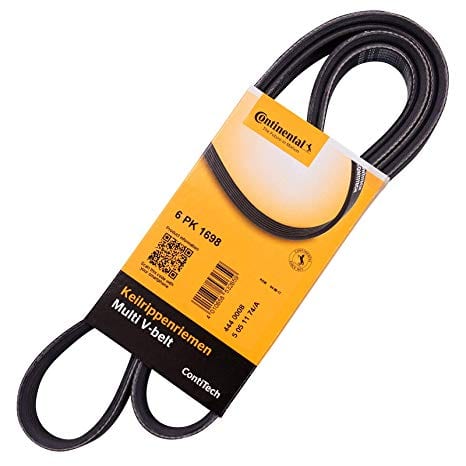
What is a timing belt and which brand to choose?
Content
- What is a timing belt in a car?
- Where is the timing belt in the car?
- What is the timing belt for
- Timing belt types
- When to check the timing belt?
- How to understand that you need to change the timing belt
- What kind of damage can occur with the timing belt?
- Do-it-yourself timing belt repair
- How to choose a timing belt, what is included and the price
- Rating of popular brands of timing belts
- Questions and answers:
Maintenance is not complete without checking and, if necessary, replacing the timing belt. Many automakers oblige the vehicle owner to replace this item when the new car passes the specified mileage.
In this article, we will consider how the timing abbreviation stands for, why this element is needed in the internal combustion engine, what is the risk of its rupture, when it needs to be replaced with a new one, how to choose the right belt.
What is a timing belt in a car?
In a car, the timing belt is an element in the form of a closed ring. The part is made of technical rubber. The inner part is reinforced with synthetic fibers that prevent the element from stretching and increase the rigidity of the product. Outside, the belt is smooth, and on the inside there are teeth.
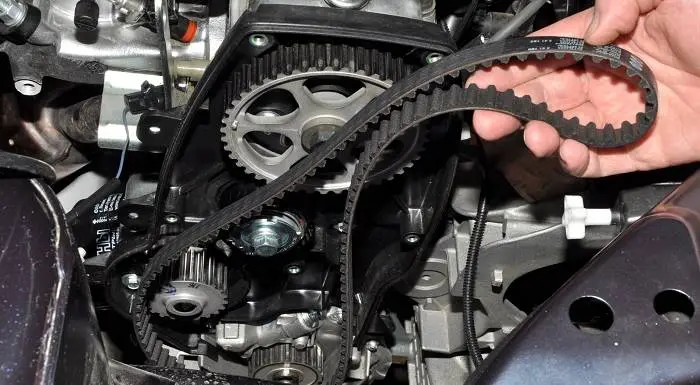
This element is also called a drive belt. Each engine has its own dimensions and therefore is equipped with a specific belt diameter. There are also cars that use a chain instead of a rubber belt. In a separate review tells about car models that have this type of drive.
In the 1950s, many cars used a chain, but this type of timing drive was very noisy as well as heavy. For its operation, you need a damper and a tension shoe. These elements made the engine device more complex and heavy, which influenced the dynamic characteristics of the vehicle.
When automakers tried to replace the chain drive with a belt drive, initially motorists did not take it with much enthusiasm. But over time, the timing belt has proven its practicality: the engine has become quieter, easier and cheaper to maintain.
To understand what the belt is for, you must first understand what the timing is.
Timing is a gas distribution mechanism, which in most modern power units is installed in the cylinder head. It is designed for the correct distribution of phases (intake / exhaust) in each cylinder of the engine. Details of what the valve timing is, is described in another review... This mechanism opens and closes intake and exhaust valves using a camshaft (for configurations and functions of this part, read here).
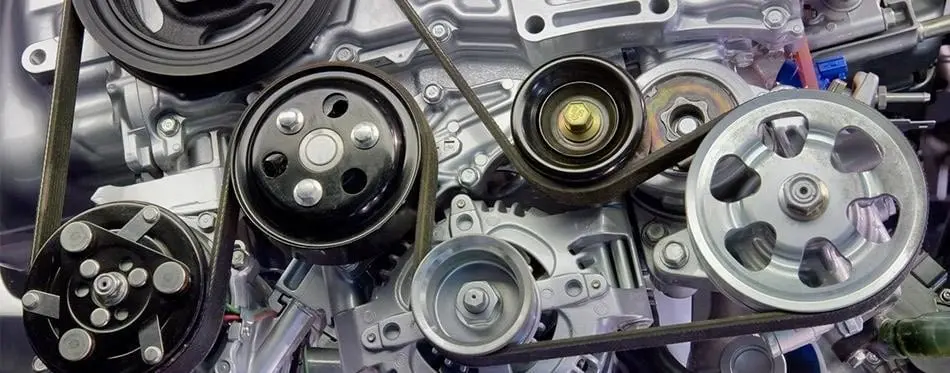
There are 3 modifications of these mechanisms. They differ from each other in the location of the camshaft and valves. These are the types of drives:
- The valves are located in the cylinder head and the camshaft is at the bottom of the engine. In order to trigger the valve timing, the camshaft drives the valves through the rocker arms and push rods. Such a modification of the timing does not allow the development of high crankshaft revolutions, which causes the power of the internal combustion engine to suffer.
- The valves are located at the bottom of the cylinder block with the plates facing up. In this case, the camshaft will also be located at the bottom of the engine, and the cams are already driving the valves themselves. These motors have a very complex fuel system, which complicates the maintenance and repair of the unit.
- The most common type of timing mechanism with an overhead camshaft and valves (in the cylinder head). One camshaft can serve all valves or only intake or exhaust valves. There are modifications in which the cams press on the rocker arms, as well as directly on the valves.
Regardless of what type of gas distribution mechanism is used in the engine, its principle of operation is the same - to open the corresponding valve in time when the piston performs the exhaust or intake stroke (what the engine strokes are, it is described here). The valve opening time also depends on the engine operating mode. A phase shifter is used in modern engines.
If the gas distribution mechanism is not configured correctly, the engine will be unstable at best. In the worst case, it won't function.
Where is the timing belt in the car?
The timing belt is located on the opposite side of the flywheel (what is it and what modifications are there, read here). It fits over the crankshaft and camshaft pulleys. They can be made in the form of wide gears or conventional pulleys. In the first case, with a weak belt tension, it will not slip, due to which the valve timing settings will remain.

The first straps were reinforced with metal courts, but the more elastic modifications are those with synthetic fibers. Rubber ensures minimal noise of the part. Regardless of the design of the motor drive pulleys, the belt always has teeth, which ensures the best adhesion to the contact surface of the parts.
In addition to being installed on the camshafts and crankshafts, the belt also connects to the unit and other attachments, such as a pump. The rest of the mechanisms are connected to the motor using their own belts.
Structurally, it would be easier to connect all mechanisms with one belt, but this will significantly reduce the service life of this element. Regardless of the type of motor, automakers have made it as easy as possible to access the belt so that it would be easier to check and replace it.
Each car model has its own timing belt, since the design of the motors is different. In each case, the diameter of the ring will be different. To ensure the maximum strength of fixing this element on the pulleys, it is tensioned using a special roller (often sold with a belt).
What is the timing belt for
Depending on the type of engine, an already prepared mixture of air and fuel, or only air (if the engine is equipped with direct injection), enters the cylinder through the valves. In order for each valve to open and close on time, the gas distribution mechanism must be synchronized with operation crankshaft.
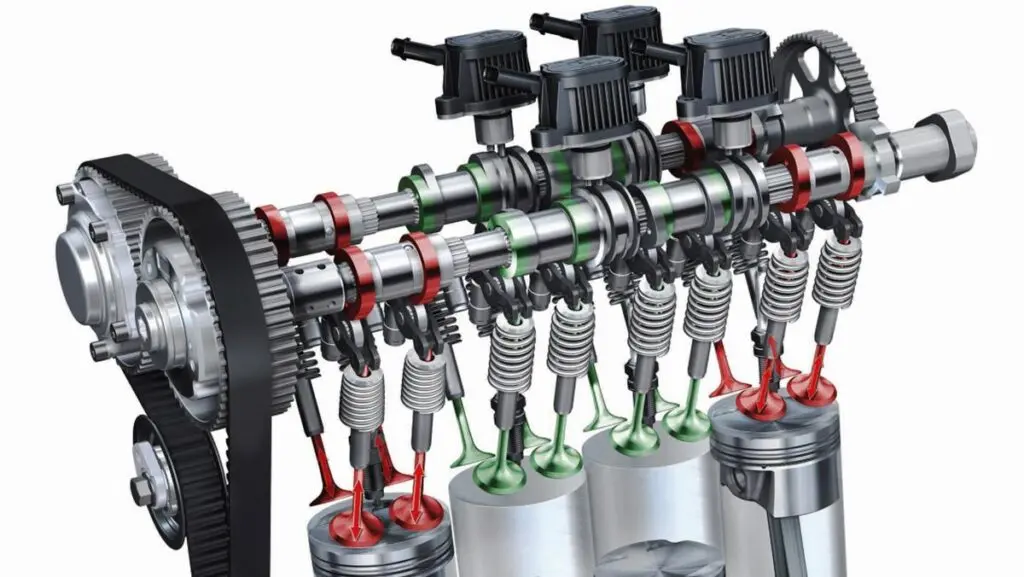
This function is performed by the drive belt. An additional function of this element is to ensure constant circulation of coolant in the cooling system (if the engine design provides for the joint operation of these mechanisms). While the engine is running, the belt rotates the pump impeller. Also, in many motors, the internal combustion engine drive circuit also includes the synchronization of the oil pump.
Purpose and principle of operation of the device
So, as you can see, the synchronous operation of the gas distribution mechanism and the crankshaft depends on the timing belt. Along the way, it ensures the operation of the water pump and oil pump. How does the element work?
Due to the firm engagement on all the necessary pulleys in accordance with the design of the internal combustion engine, when the car starts up, the starter turns the flywheel, and this in turn causes the crankshaft to rotate. The crank mechanism begins to move the pistons inside the cylinders.
At the same moment, the torque is transmitted to the timing belt and through it to the camshaft pulley. At this moment, the valves begin to open and close in accordance with which stroke is performed in the cylinders.
The impeller of the water pump starts to rotate synchronously, and the drive of the oil pump is activated. Crankshaft position sensor (what it is and what function it has, it tells here) fixes the position of the piston in the first cylinder and activates the process of spark formation in the ignition system. A fresh portion of the air-fuel mixture enters the cylinders through the opening valves. An impulse is applied to the corresponding candle and the BTC lights up. The unit then runs without the aid of a starter.
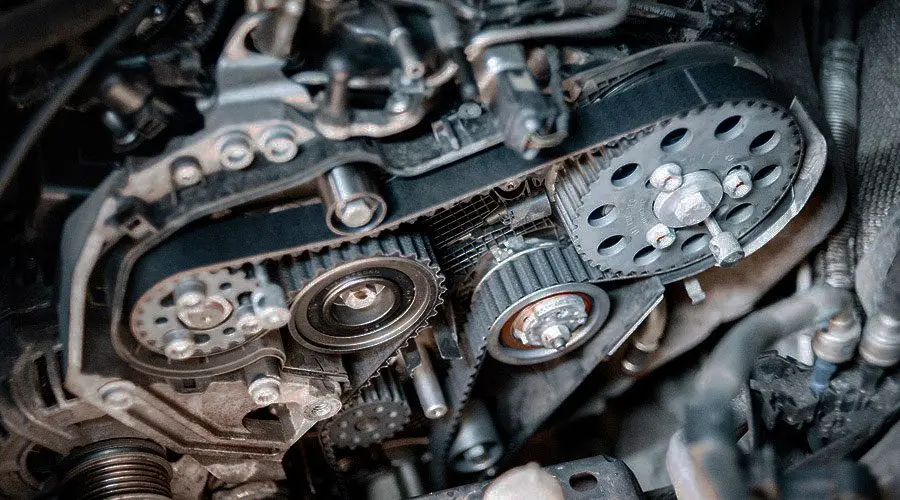
If the belt slips, the synchronization of the cylinder-piston group and the valve timing will be disrupted. In this case, the valves will not open in accordance with the motor strokes. Depending on the type of motor and the degree of violation of these settings, the internal combustion engine will either work unstably or even stall. For this reason, it is necessary to periodically check the tension of the drive ring.
Explanation of timing belt designations
As already mentioned, each motor has its own belt. To prevent the motorist from confusing the part, there is a product marking on the outside. Here is the transcript of each of them. In numbers, the manufacturer encrypts the number of teeth, their pitch and profile, as well as the width of the product. According to the international standardization (ISO) marking, the designations on the belts can be deciphered as follows:
92147x19 - 92 (tooth profile); 147 (number of teeth); 19 (width).
On the belt itself there may be approximately the following inscription: 163 RU 25.4 24315 42200 CR. The first number corresponds to the number of teeth, the second to the width of the product. The rest of the designations reveal details regarding the profile of the teeth and other parameters.
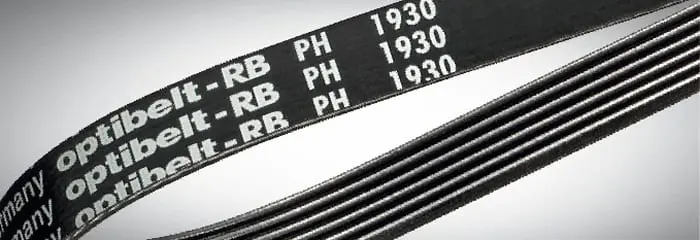
More attention should be paid to the literal meaning. The belt can be marked with CR, HNBR or EPDM. Each of them indicates the material from which the product is made:
- CR - chloroprene. It is synthetic rubber. The material tolerates weather changes well, does not burn. If the car often drives on dusty roads, you should pay attention to this material, as it has increased resistance to abrasion. Resistant to aggressive gasoline and engine oil. The operating temperature range is from -40 to +160 degrees.
- RPDM is an ethylene-propylene-diene-based rubber. It is also a type of synthetic rubber. The material can be stored for a long time. It is resistant to abrasion and high temperatures. Poorly tolerates contact with petroleum products. The temperature range is from -40 to +150 degrees.
- HNBR - High Temperature Resistant Rubber (Hydrogenated Nitrile Butadiene Elastomer). The material tolerates contact with chemicals used in cars well. Depending on the amount of acrylonitrile, the product is able to withstand severe frosts, but at the same time it is less resistant to the effects of oil products. The temperature range is between -50 and +160 degrees. This is the most expensive material for timing belts.
In the technical literature for the machine, you can find the required parameters for a particular motor. In addition to the belt geometry, the wear resistance of the product is also an important parameter. When purchasing a new belt, you need to consider the following factors:
- It has to withstand heavy loads and high tensile forces;
- Must retain its properties, both in frost and hot summer;
- Must be resistant to rapid wear;
- The profile of the teeth should not change until the end of the service life;
- When stretched, it should not lose its properties.
To take into account all these factors, you should purchase products from well-known manufacturers.
Timing belt types
Let's take a quick look at the common types of timing belts. In total, there are three modifications of such elements:
- With teeth;
- Wedge-shaped profile;
- Poly-V-shaped profile.
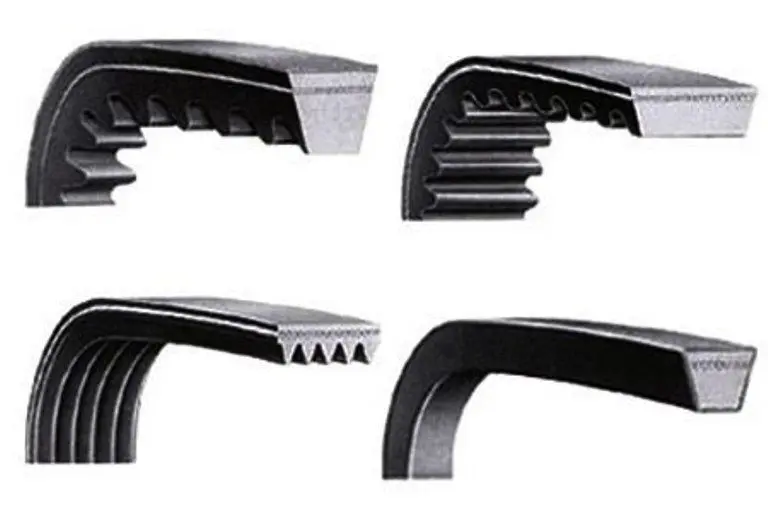
In modern cars, timing belts are used. The remaining types of profiles have little proven themselves as drive belts for a motor, but similar varieties are used to work, for example, a generator or compressor.
As for the profile of the teeth, there are also several types of them. Each of them has its own characteristics, and at the same time its purpose. Conventional machines use a trapezoidal toothed belt. There are belts with rounded teeth. Their purpose is to synchronize the mechanisms of a more powerful unit. Such power units have a lot of torque, which can quickly wear out the teeth on a standard belt.
When to check the timing belt?
It is usually not necessary to check the condition of the belt frequently. For this, scheduled vehicle maintenance is provided. The list of jobs at each interval of the run includes different jobs. Once during the entire cycle of work, a planned belt replacement is performed, and the rest of the time the craftsmen simply check the condition of this and other elements of the machine.
An unscheduled check of the drive belt must be carried out in case of some breakdowns of the car, for example, a pipe of the cooling system burst, and antifreeze got on the timing drive. In this case, after a short period of time, you should also check the condition of other rubber parts on which liquid has spilled (or oil, if the motorist accidentally spills it on the unit). Chemicals that make up antifreeze, engine oil and fuel can destroy rubber products.
Depending on the type of engine, its power and car model, the planned belt replacement is performed after 60-160 thousand kilometers.
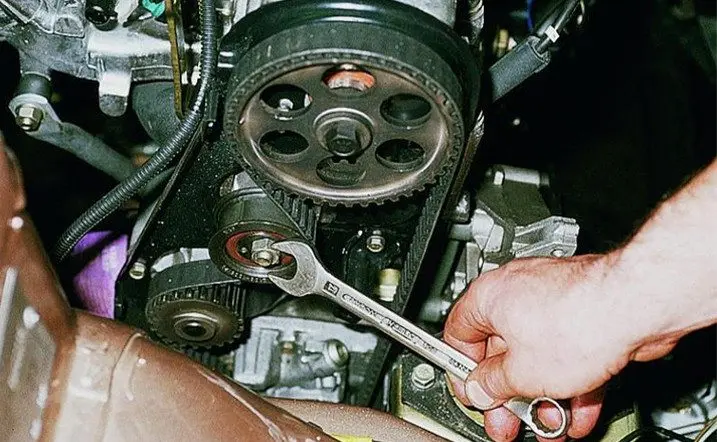
Another reason for frequently checking the status of this element is when the car is started from the pusher. In this case, the belt acts as a starter, which is not natural for such a part, because when the engine is started in this way, a greater load is exerted on the belt than during a normal start. This is an important reason why the battery should be monitored (for maintenance of the power supply and its correct operation, see here).
How to understand that you need to change the timing belt
It is not uncommon for a belt to break off without even having worked out the entire working resource, although the manufacturer sets the frequency of its replacement with a small margin. For this reason, manufacturer recommendations are not the only criterion to be guided by.
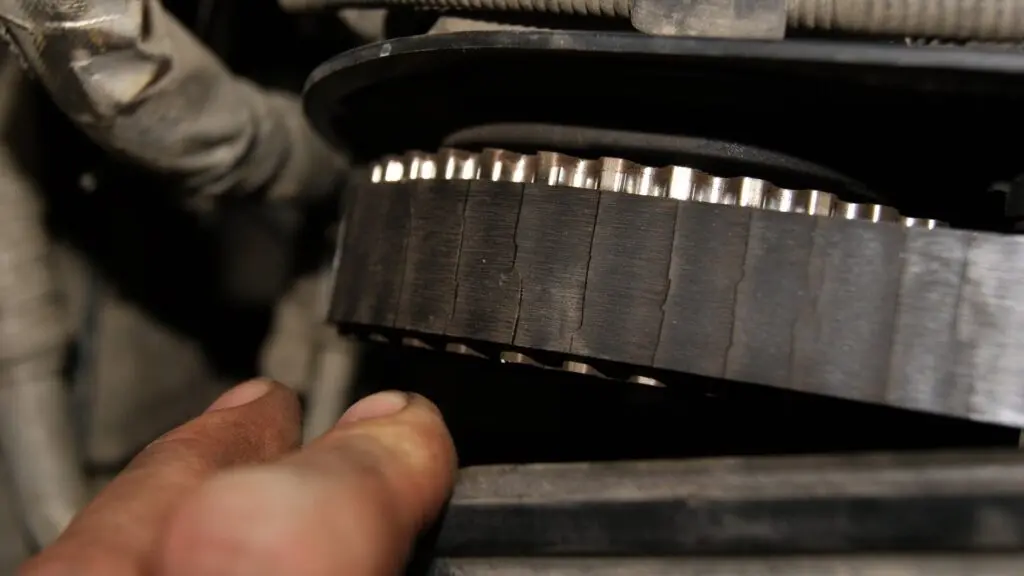
While a visual inspection is the best way to ensure that the timing belt is in good condition, it is protected by a shroud. The protection is not always easy to remove, so it is useful to focus on the following factors:
- In addition to mileage, the age of the product is also important. You should not use a belt that has been on the car for more than 7 years (this happens when the car rarely drives). Rubber products have their own expiration date, after which the product loses its properties.
- When malfunctions began to appear in the ignition system, but the ignition itself is working properly. This effect can appear when the teeth overlap on the pulley. With such a malfunction, the motor can triple (for other reasons, read separately) or not start at all.
- A sudden appearance of smoke from the exhaust pipe. Of course, there are many reasons for this effect (read about some of them here), but with the timing it is associated with the fact that if the timing and valve timing mismatch, the fuel does not burn out completely, which causes the catalyst to suffer, and in its absence, unburned particles are in a greater concentration in the exhaust.
- Heavy wear on the teeth can cause clicking sounds from under the hood. However, a failing bearing of a pump, generator and other equipment also has this effect.
- When the crankshaft oil seal is worn, oil seeps through it and gets onto the pulley. If the oil level in the sump constantly drops (checked with a dipstick), but there is no characteristic bluish smoke from the exhaust, and a small oil stain constantly appears under the car, you should pay attention to the crankshaft oil seal and replace the belt after repair, because it has already come into contact with lubricant.
- If the belt guard can be easily removed, a visual inspection of the drive element can be carried out. Before carrying out such diagnostics, you need to unscrew the candles so that turning the flywheel does not start the engine (if the ignition is accidentally turned on). If cracks and heavy wear are found, the part must be replaced as soon as possible.
What kind of damage can occur with the timing belt?
Here are common timing belt breakages:
- Tension release. This happens due to the natural wear and tear of the product. Typically this parameter is checked at about half the life of the element.
- Accelerated tooth wear. This problem most often occurs in over-tensioned belts. If nothing is done, the belt will break in most cases.
- Ingress of foreign objects into the timing drive. This rarely happens, but it does occur on this list. If this happens, the item must be replaced shortly.
- The teeth are slipping on the pulley. Such a malfunction is a consequence of the ingress of oil on the teeth or poor belt tension. If this happens to an insignificant extent, the motor will continue to work, but not with the same efficiency. The reason is that the synchronization of the phases and clock cycles was lost. If the teeth are severely slipping, the engine may break due to pistons hitting the valve.
- Idler roller wedge. This often happens when buying a cheap product or ignoring its replacement.
- Broken belt. Depending on the type of motor, this problem can be the cause of various damage to the power unit. Most modern engines suffer serious damage from a broken timing belt.
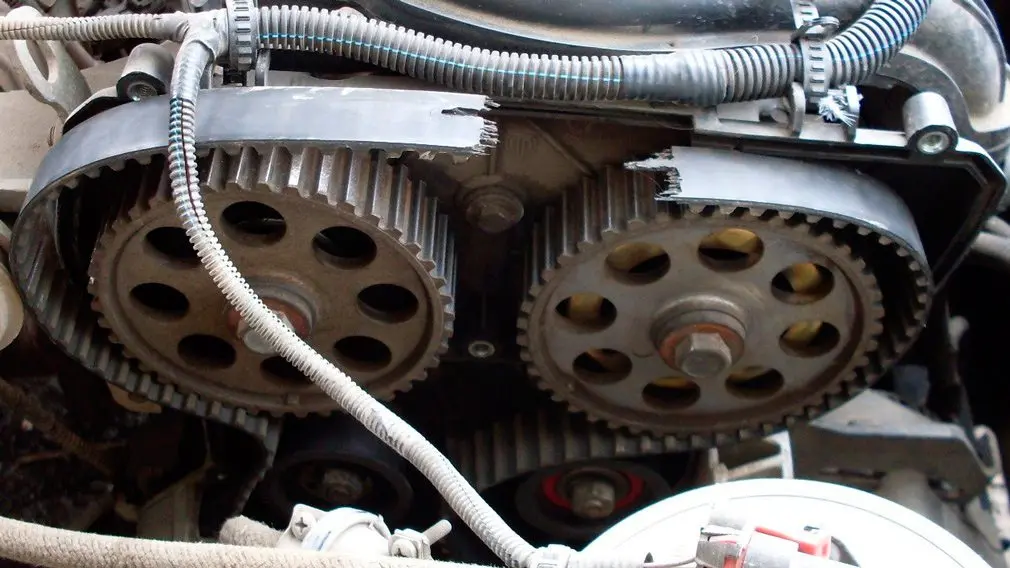
Let's consider the last breakdown in more detail.
What happens if the timing belt breaks
The valve timing must be adjusted so that when the piston is at top dead center, the valves are closed. If at this moment the valve is open, the piston will hit it and bend its stem. When a car's engine belt breaks, the contact of these two parts in many motors is inevitable, since no torque is supplied to the timing shaft (the valves freeze in the open position), but the crankshaft continues to rotate by inertia.
To eliminate this problem, some manufacturers have developed special piston shapes, the recesses in which follow the contours of the valve discs, so that when the timing belt breaks, the rods do not bend. But most ICEs have classic pistons.
A burst of a timing drive element in most cases leads to a capital of the power unit: valves bend, pistons break, and in some cases (for example, in diesel engines) even parts of the crank mechanism break. The cost of a major overhaul is often comparable to half the price of a similar car on the secondary market.
But more often the tension roller wedge leads to serious damage to the unit. In this case, the belt may not break, but several teeth will be cut off, and the internal combustion engine itself is experiencing serious overloads. In addition to damage to valves and pistons, the crank mechanism can bend.
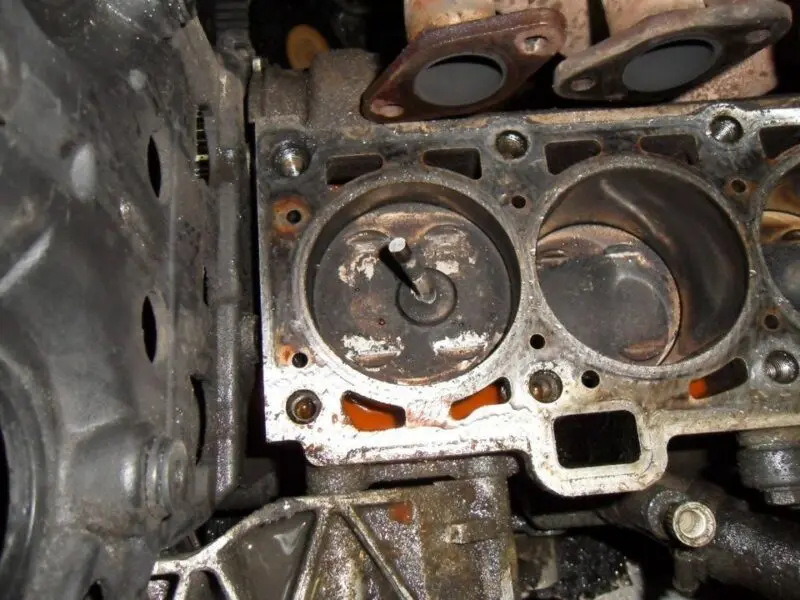
Considering the above, every motorist needs to take seriously the timing belt replacement interval.
The external condition of the product can say the following:
- Tear or tousled court part - excessive tension;
- A cut tooth (or several) - the element is weakly stretched;
- Working out on all teeth - incorrectly tensioned;
- A large number of cracks - the part is old or frequent use at extreme temperatures (high or low);
- Wear of the distance between the teeth - excessive or insufficient tension;
- Oil stains - wear of the pulley oil seal;
- Too hard material - the ring is already old;
- Working out on the end part - the element is skewed;
- The drive makes a lot of noise - poor tension.
Do-it-yourself timing belt repair
You can replace this element yourself, but under one condition. The motorist should be well versed in the structure of his car. Synchronizing the strokes and phases of the engine is one of the complex procedures in which you need to take into account many subtleties. If in old cars the timing mechanism has a relatively simple device, then phase shifters and other systems can be installed in modern motors, with which the unit is able to adjust its operating modes.
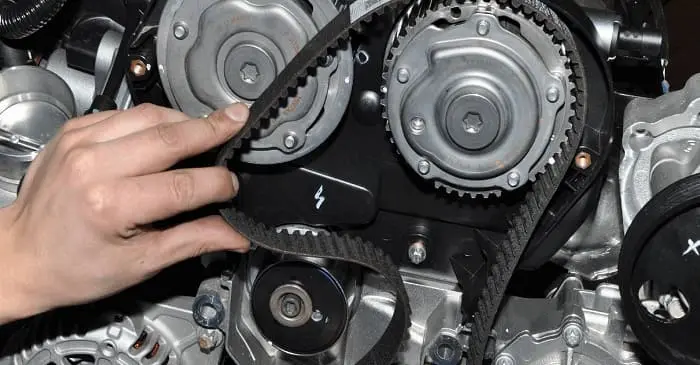
To avoid mistakes when replacing this element, it is worth contacting specialists who have the skill of working with specific engines. To simplify this procedure, manufacturers apply special marks to the engine block housing and pulleys. When performing work, it is extremely important to ensure that these notches are aligned.
Repair work is carried out in the following sequence:
- Free access to the belt;
- The crankshaft is set in such a position that the piston of the first cylinder is at TDC;
- Pay attention to the labels. They must match;
- We dismantle the old ring and inspect the motor oil seals;
- Do not change only the belt. So that there are no problems with the pump and the tension roller, the entire timing set must be replaced (belt and tension rollers, if it is not one);
- The cleanliness of the pulleys is checked (it is extremely important not to knock off the marks);
- We put on the belt and fix it with a roller;
- We adjust the tension in accordance with the manufacturer's recommendations. In many cases, the main parameter by which you can determine if the ring is tight enough is the following. On the longest section (from the pump to the camshaft gear), we try to turn the belt with two fingers. If it turned out to be done by 90 degrees, then the element is sufficiently stretched.
Some motorists wonder whether it is worth changing the water pump when replacing the belt. It is not necessary to do this, but if the drive scheme also implies the transfer of torque to the pump, then for the sake of confidence it is worth doing. This is because a broken water pump can jam and rupture the drive. In other cases, this part must be replaced when it is found to be faulty.
How to choose a timing belt, what is included and the price
When choosing a new drive ring, you need to give preference to originals, not analogs. Factory drives last the longest. In terms of quality, only original elements match them. Their cost, of course, is higher than budget counterparts, but there will be confidence that the ring will not burst after a couple of tens of thousands of kilometers.
The search for a new belt should be carried out by checking the vehicle's VIN code. If there is no information on a specific car in the database, you can select a ring according to the parameters of the car (release, equipment, type of internal combustion engine). According to these parameters, not only original spare parts are selected, but also analogues.

Before purchasing a product, you should check the production date. It is best to keep the products fresh - rubber products have their own shelf life. Small subtlety: during manufacture, the belt is marked before it is completed. For this reason, each item will have different numbers.
Depending on the manufacturer, drive rings are sold either individually or complete with idler rollers. As already mentioned, it is better to replace the kit, and not each part separately. If only the belt is changed, it will overload the tension roller, which will quickly break the second one. Its malfunction will lead to rapid wear of the rubber part, which will soon require replacement again.
Each manufacturer of auto parts has its own pricing policy, but the original is definitely more expensive. By the way, it is expensive parts that are counterfeited, so before buying, you should pay attention to the presence of a manufacturer's quality certificate and branded holograms on the packaging.
Rating of popular brands of timing belts
Here is a small rating of manufacturers engaged in the manufacture of timing drive elements:
| Manufacturer: | Cost: | Advantages: | Disadvantages: |
| Original | Depending on the car model | Highest quality products. Car manufacturers often have their own divisions that make parts for their vehicles. | The most expensive product category. |
Contitech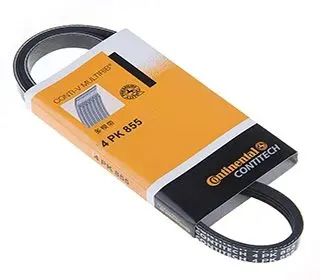 | About 30 USD | Automakers use these products to factory fit their vehicles. The shelf life is approximately 30 percent longer than recommended for use, which gives the belts a large margin of safety. Wear resistant. The interior is treated with an agent that prevents the corrosive effects of engine lubricant or antifreeze. Compared to analogs, it can withstand the load, 15 percent more. Suitable for many foreign models. | Often counterfeited. Expensive. |
Gates | More than $ 30 | A large list of brands on which the product can be installed. Manufacturer's warranty for 50 thousand km. or 2 years of storage. The width is 34mm, due to which the breakage occurs much less frequently. Used for the factory complete set of cars. Withstands high revs, making them suitable for sports cars. | Replacement exclusively with a set. Expensive. |
Dayco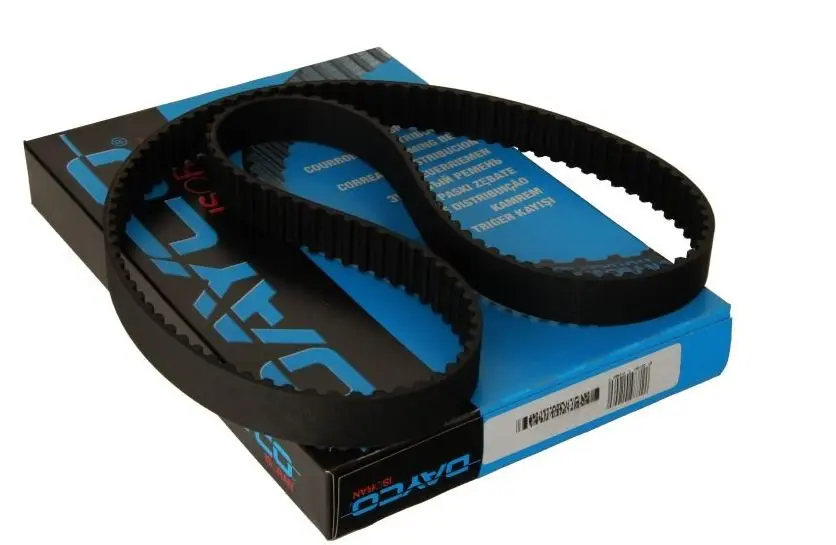 | About 20 USD | Multilayer products. Not worse than analogues from other manufacturers. | They stretch very quickly. Often counterfeited. |
Bosch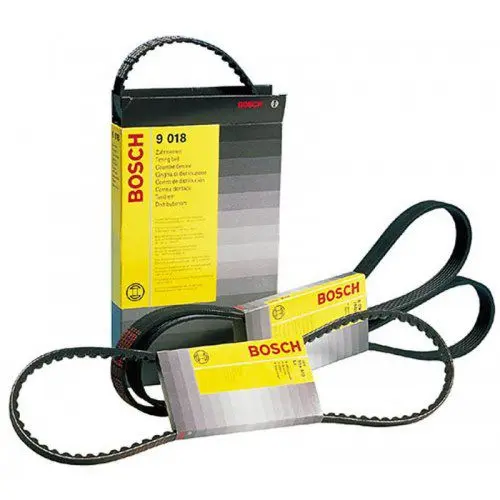 | Within 15 USD | If the machine is carefully operated, then the belt service life is from 60 thousand km. Can be installed on both domestic cars and foreign models. There are few fakes. They retain their properties for a long time. A large assortment. | The product dries up during long-term storage. Be sure to change with a tension roller. |
AMD | About 80 USD | Sold immediately as a set with three rollers and a balancing strap. So that the parts do not deform, each of them is individually vacuum packed. Low noise. The roller bearing has no backlash. To protect against counterfeiting, the rollers are specially marked. | The most expensive product. Despite the quality of the rollers, the bypass can play. Sometimes the kit contains not the original belt, but an analogue from the Korean company Dongli. |
In conclusion, a short video on why some timing belts wear out ahead of time:
Questions and answers:
How to determine when to change the timing belt? 1 - violation of the integrity of the belt (cracks, flaps, etc.). 2 - each part has its own working life (for rubber it is 5-6 years or 50-100 thousand km).
What is a timing belt for? This is a drive element that synchronizes the operation of the pistons in the cylinders and the gas distribution mechanism so that the valves are triggered in accordance with the stroke performed.
What is timing belt decoding? Timing stands for gas distribution mechanism. He is responsible for the timely opening / closing of the valves. The timing belt connects the crankshaft to the camshaft.
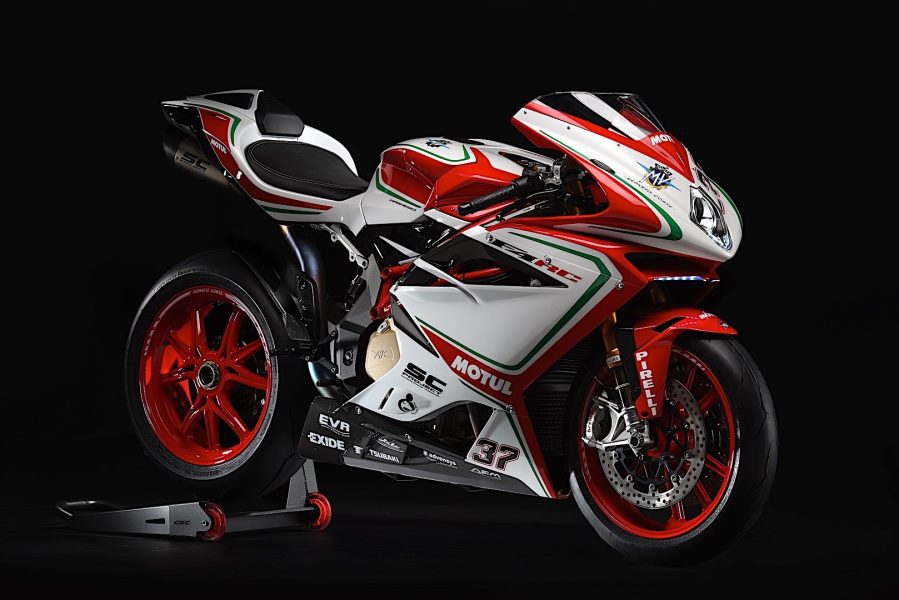

2 comment
anonym
tanya
if the timing belt is still new, but the product is old (10 years ago), can it still be used?
tks
Geo
Hello, no, to be avoided because you change the belt after a certain number of kilometers traveled but also a lifespan over time, for example 80000km or 5 years, because the rubber of the belt ages.